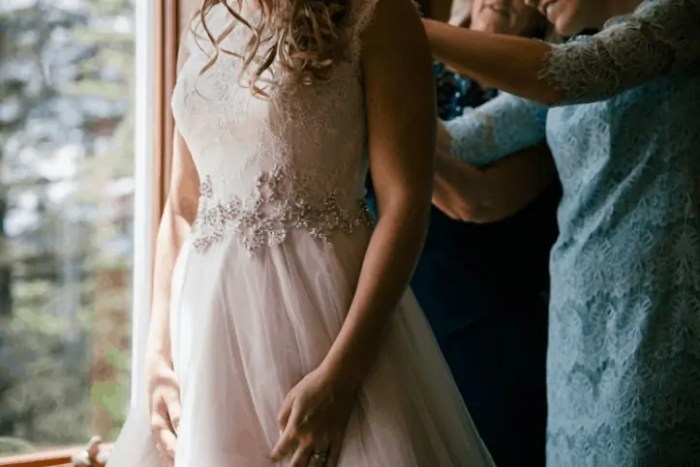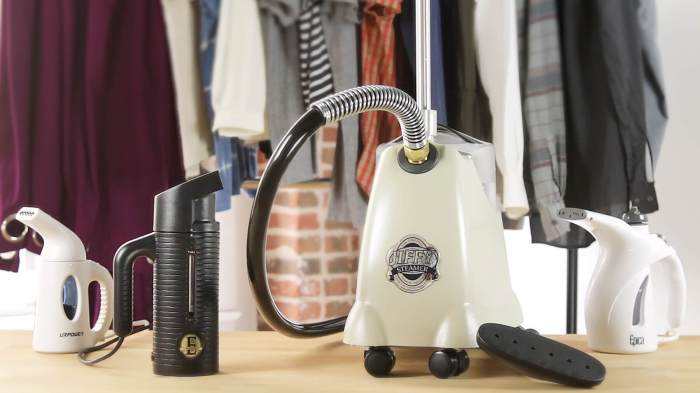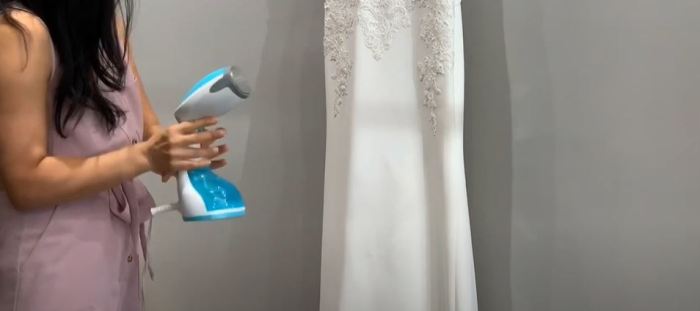Choosing the Best Steamer for Your Wedding Dress: Best Steamer For Wedding Dress
Best steamer for wedding dress – Preserving the pristine condition of your wedding dress is paramount. A well-chosen steamer can be invaluable in removing wrinkles and ensuring your dress looks its absolute best on your special day. This guide explores various steamer types, factors to consider, usage tips, and alternatives to steaming, empowering you to make an informed decision.
Types of Steamers for Wedding Dresses
Several steamer types cater to different needs and budgets. Understanding their features and limitations is crucial for selecting the right one for your wedding dress.
| Type | Pros | Cons | Price Range |
|---|---|---|---|
| Handheld Steamer | Portable, affordable, easy to use, ideal for spot treatment. | Lower steam output, may take longer for larger dresses, less powerful for stubborn wrinkles. | $20 – $80 |
| Garment Steamer | Higher steam output than handheld, faster steaming, suitable for larger garments. | Less portable than handheld, generally more expensive. | $80 – $200 |
| Professional-Grade Steamer | Powerful steam output, quick heating, excellent for heavy fabrics and stubborn wrinkles, often features a larger water tank. | Expensive, bulky, not portable. | $200+ |
Handheld steamers are perfect for quick touch-ups or smaller dresses, while garment steamers offer a balance between power and portability. Professional-grade steamers provide the most powerful steam, ideal for intricate or heavily embellished dresses but lack portability.
Factors to Consider When Choosing a Steamer, Best steamer for wedding dress

Source: loveyoutomorrow.com
Several factors influence the choice of the best steamer for your wedding dress. Careful consideration of these elements will ensure a positive steaming experience.
- Fabric Type: Delicate fabrics like silk and lace require a gentler approach than heavier fabrics like satin or taffeta. Choose a steamer with adjustable steam settings.
- Dress Design: Intricate beading, embroidery, or layers may require a steamer with precise steam control to avoid damage.
- Budget: Steamers range in price from affordable handheld models to expensive professional-grade units.
- Ease of Use: Consider the steamer’s weight, size, and ease of filling the water tank.
- Portability: If you plan to steam your dress at a different location, portability is a key factor.
Using an inappropriate steamer on delicate fabrics can lead to damage, including scorching, discoloration, or shrinking. Always test the steamer on an inconspicuous area before steaming the entire dress.
Steamer Usage and Care
Proper usage and maintenance are essential to prolong the life of your steamer and protect your wedding dress.
- Hang the dress on a padded hanger.
- Fill the steamer with distilled water (to prevent mineral buildup).
- Test the steamer on an inconspicuous area of the dress.
- Hold the steamer 6-8 inches away from the fabric.
- Steam in upward motions, following the grain of the fabric.
- Avoid holding the steamer in one place for too long.
- Allow the dress to air dry completely before wearing.
Cleaning involves regularly emptying the water tank and cleaning the soleplate. Consult your steamer’s manual for specific cleaning instructions. Regular maintenance ensures optimal performance and extends the lifespan of your steamer.
Alternatives to Steaming a Wedding Dress

Source: yourbestdigs.com
While steaming is a popular method, alternative options exist for wrinkle removal. Comparing these methods helps in making the best decision based on your specific needs and the dress’s condition.
| Method | Cost | Effectiveness | Time Required |
|---|---|---|---|
| Professional Dry Cleaning | High | Very High | Several days |
| Professional Pressing | Moderate to High | Very High | 1-2 days |
Professional dry cleaning and pressing are effective but more expensive and time-consuming than steaming. Steaming offers a more affordable and faster option for many, but professional methods are best for delicate fabrics or severe wrinkling.
Illustrative Examples of Steaming Wedding Dress Fabrics

Source: garmentsteamerguide.com
Different fabrics require specific steaming techniques to avoid damage. Understanding these techniques is crucial for achieving optimal results.
For silk, use a low steam setting and maintain a greater distance (8-10 inches) from the fabric. For lace, steam gently and avoid prolonged exposure to steam. Satin can tolerate higher heat, but still requires a cautious approach. When steaming delicate embellishments like beading or sequins, use a low steam setting and hold the steamer further away. Always work in sections, moving the steamer continuously to avoid over-steaming.
For the bodice, steam from the inside out where possible. For the skirt and train, work systematically from top to bottom, ensuring even steam distribution. Remember to always test a small inconspicuous area first.
Frequently Asked Questions
What if my wedding dress has delicate beading or sequins?
Use a low steam setting and maintain a safe distance to prevent damage. Consider using a garment cover or testing on an inconspicuous area first.
How often should I clean my steamer?
Clean your steamer after each use to prevent mineral buildup and ensure optimal performance. Refer to your steamer’s specific cleaning instructions.
Can I steam a wedding dress made of silk?
Yes, but use a low steam setting and hold the steamer at a distance from the fabric to avoid damaging the delicate silk. Test on an inconspicuous area first.
What are the risks of using the wrong steamer?
Using a steamer with too high a temperature or too close to delicate fabrics can cause scorching, discoloration, or damage to the dress. Always test on an inconspicuous area and use a low setting.
